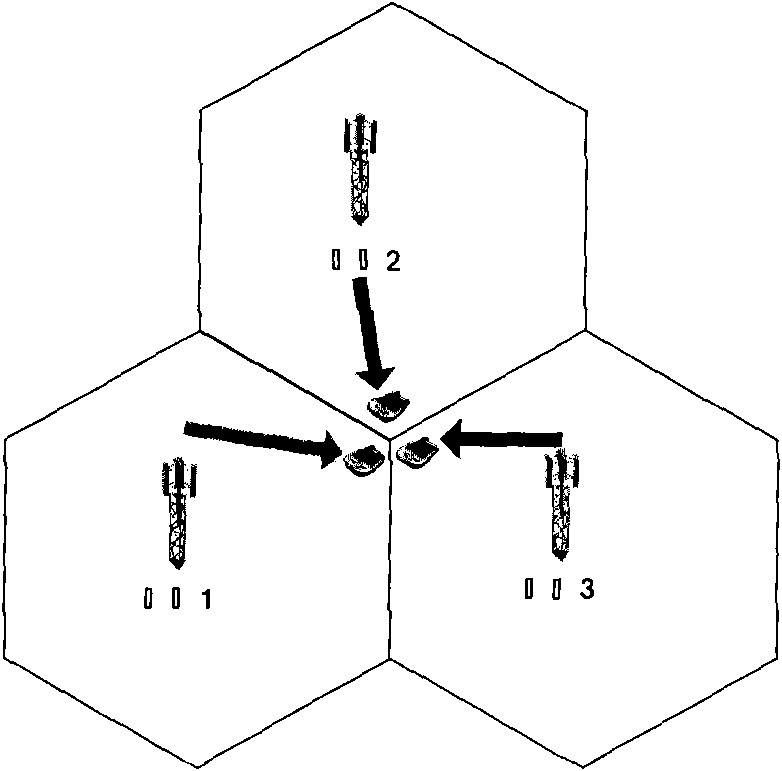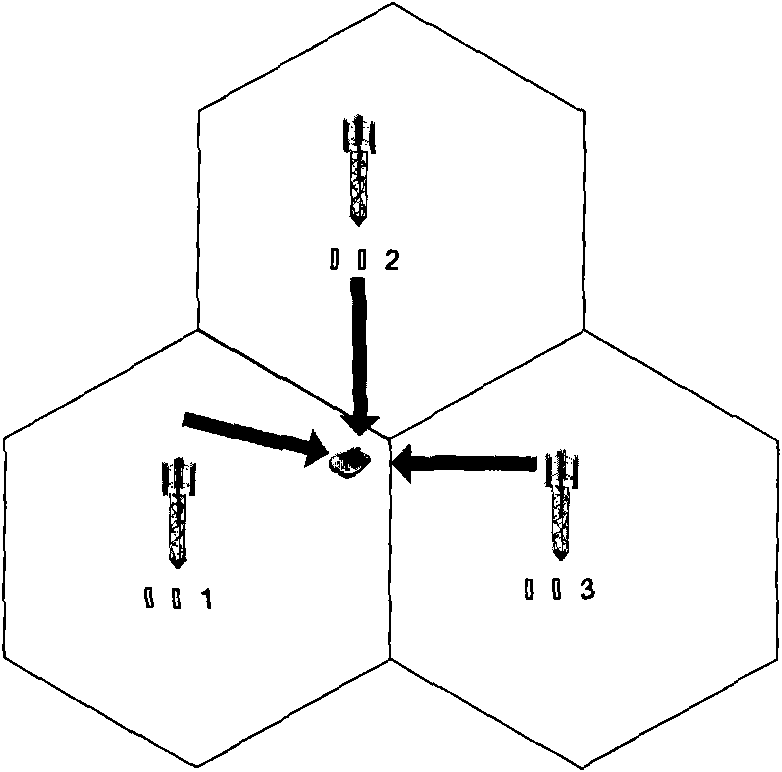Method, system and equipment for determining collaborative community and transmission point in CoMP
A collaborative cell, multi-point collaborative technology, applied in diversity/multi-antenna systems, electrical components, wireless communications, etc., can solve the problem of inability to determine CoMP collaborative cell sets and CoMP transmission points
- Summary
- Abstract
- Description
- Claims
- Application Information
AI Technical Summary
Problems solved by technology
Method used
Image
Examples
Embodiment 1
[0096] like Figure 5A As shown, this embodiment is a process of determining an uplink (UL) CoMP coordinated cell set, and the details are as follows:
[0097] There are various ways to configure the uplink CoMP coordinated cell set, which may be pre-determined by network planning during network deployment, or determined through processes such as UE measurement and reporting. Through the SRS reporting method, multiple cells can learn the uplink channel quality of the UE, and send the information to the serving cell where the UE is located, as the basis for uplink frequency domain scheduling, MCS selection and resource allocation. This embodiment describes the process in which the UE determines the set of UL CoMP coordinated cells on the network side through the SRS measurement of the network from the non-CoMP (non-CoMP) state:
[0098] Step S01: through a radio resource management (RRM) measurement and reporting process, the network side (serving cell) determines a CoMP measu...
Embodiment 2
[0107] like Figure 5B As shown, this embodiment is the update process of the downlink (DL) CoMP coordinated cell set, and the details are as follows:
[0108] The configuration of the downlink CoMP cooperating cell set can be completed through the process of RRM measurement -> determining CoMP measurement set -> determining CoMP cooperating set. Through the SRS reporting method, multiple cells can learn the uplink channel quality of the UE, and send the information to the serving cell where the UE is located. The serving cell uses the TDD channel reciprocity as the basis for downlink frequency domain scheduling, MCS selection and resource allocation, etc. . This embodiment describes a process in which the UE updates the DL CoMP coordinated cell set at the network side through SRS measurement of the network in the CoMP state. Since the set of CoMP coordinated cells is transparent to the UE and is only known to the network side, after the serving cell determines the set of Co...
Embodiment 3
[0119] like Figure 5C As shown, this embodiment is a process of determining a UL CoMP transmission point, and the details are as follows:
[0120] After the uplink CoMP coordinated cell set is determined, the uplink CoMP transmission point set needs to be determined. According to the channel conditions of each cell at different times, the CoMP transmission point set can be dynamically changed. Through the SRS reporting method, multiple cells can learn the uplink channel quality of the UE, and send the information to the serving cell where the UE is located, as the basis for uplink frequency domain scheduling, MCS selection and resource allocation. This embodiment describes the process in which the UE determines the UL CoMP transmission point set and scheduling resources on the network side through the SRS measurement of the network in the CoMP mode:
[0121] Step S21: the candidate cell receives the SRS sent by the UE according to the indication of the serving cell, and fee...
PUM
 Login to View More
Login to View More Abstract
Description
Claims
Application Information
 Login to View More
Login to View More - R&D
- Intellectual Property
- Life Sciences
- Materials
- Tech Scout
- Unparalleled Data Quality
- Higher Quality Content
- 60% Fewer Hallucinations
Browse by: Latest US Patents, China's latest patents, Technical Efficacy Thesaurus, Application Domain, Technology Topic, Popular Technical Reports.
© 2025 PatSnap. All rights reserved.Legal|Privacy policy|Modern Slavery Act Transparency Statement|Sitemap|About US| Contact US: help@patsnap.com



